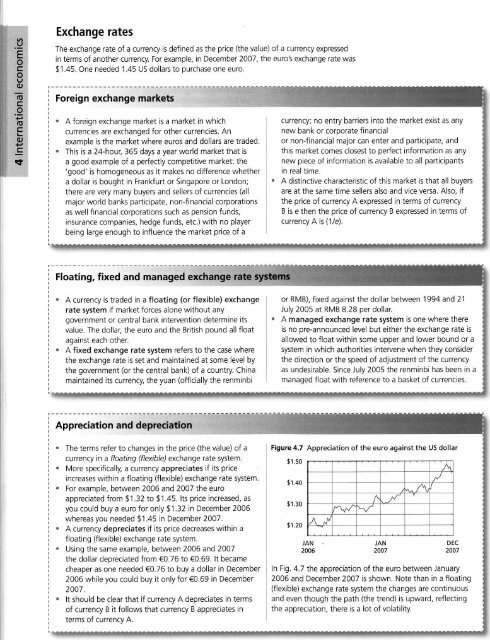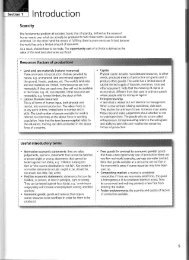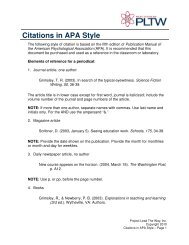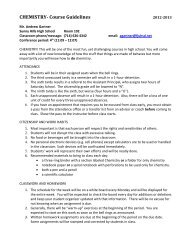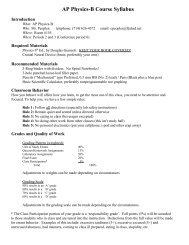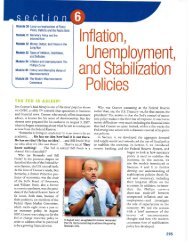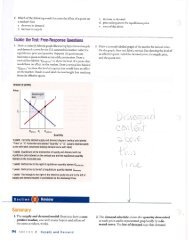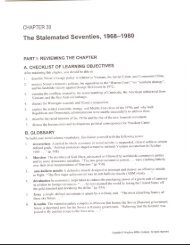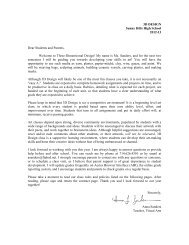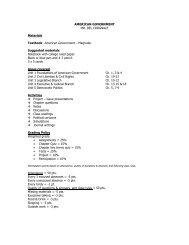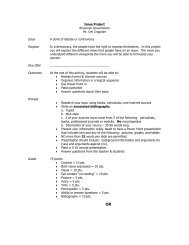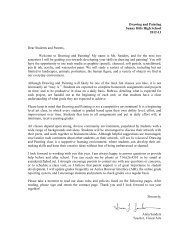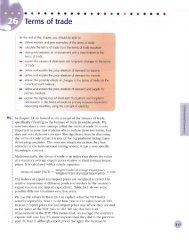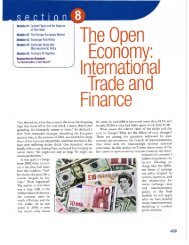IB Econ Study Guide Internationals - Sunny Hills High School
IB Econ Study Guide Internationals - Sunny Hills High School
IB Econ Study Guide Internationals - Sunny Hills High School
You also want an ePaper? Increase the reach of your titles
YUMPU automatically turns print PDFs into web optimized ePapers that Google loves.
Exchange rates<br />
The exchange rate of a currency is defined as the price (the value) of a cunency expressed<br />
in terms of another currency. For example, in December 2007, the euro3 exchange rate was<br />
$1.45. one needed 1.45 US dollars to purchase one euro.<br />
Foreign exchange<br />
A foreign exchange market is a market in which<br />
currencies are exchanged for other currencies. An<br />
example is the market where euros and dollars are traded.<br />
This is a 24-hour, 365 days a year world market that is<br />
a good example of a perfectly competitive market: the<br />
'good' is homogeneous as it makes no difference whether<br />
a dollar is bought in Frankfurt or singapore or London;<br />
there are very many buyers and sellers of currencies (all<br />
major world banks participate, non-financial corporations<br />
as well financial corporations such as pension funds,<br />
insurance companies, hedge funds, etc.) with no player<br />
being large enough to influence the market price of a<br />
Floating, fixed and<br />
A currency is traded in a floating (or flexible) exchange<br />
rate system if market forces alone without any<br />
government or central bank intervention determine its<br />
value. The dollar, the euro and the British pound all float<br />
against each other.<br />
A fixed exchange rate system refers to the case where<br />
the exchange rate is set and maintained at some level by<br />
the government (or the central bank) of a country China<br />
maintained its currency, the yuan (officially the renminbi<br />
Appreciation and<br />
currency; no entry barriers into the market exist as any<br />
new bank or corporate financial<br />
or non-financial major can enter and participale, and<br />
this market comes closest to perfect information as any<br />
new piece of information is available to all participants<br />
in real time.<br />
A distinctive characteristic of this market is that all buyers<br />
are at the same time sellers also and vice versa. Also, if<br />
the price of currency A expressed in terms of currency<br />
B is e then the price of currency B expressed in terms of<br />
currency A is (1/e).<br />
or RMB), fixed against the dollar between 1994 and 21<br />
July 2005 at RMB 8.28 per dollar.<br />
. A managed exchange rate system is one where there<br />
is no pre-announced level but either the exchange rate is<br />
allowed to float within some uooer and lower bound or a<br />
system in which authorities intervene when they consider<br />
the direction or the speed of adjuslment of the currency<br />
as undesirable. Since July 2005 the renminbi has been in a<br />
managed float with reference to a basket of currencies.<br />
The terms refer to changes in the price (the value) of a Figure 4.7 Appreciation of the euro against the US dollar<br />
currency in a //oatlng (flexible) exchange rate system.<br />
More specifically, a currency appreciates il iIs price<br />
$1.50<br />
increases within a floating (flexible) exchange rate system.<br />
For example, between 2006 and 2007 the euro<br />
$1.40<br />
appreciated from $1 .32 to $1.45. lts price increased, as<br />
you could buy a euro for only $1.32 in December 2006<br />
$1.30<br />
whereas you needed $1.45 in December 2007.<br />
A currency depreciates if its price decreases within a<br />
$1.20<br />
floating (flexible) exchange rate system.<br />
Using the same example, between 2006 and 2007<br />
the dollar depreciated from €0.76 to €0.69. lt became<br />
IAN<br />
2006<br />
IAN<br />
2007<br />
DEC<br />
2007<br />
cheaper as one needed €0.76 to buy a dollar in December ln Fig. 4.7 ihe appreciation of the euro between January<br />
2006 while you could buy it only for €0.69 in December 2006 and December 2007 is shown. Note than in a floating<br />
2007 .<br />
(flexible) exchange rate system the changes are continuous<br />
It should be clear that if currency A depreciates in terms and even though the path (1he trend) is upward, reflecting<br />
of currency B it follows that currency B appreciates in<br />
terms of currency A.<br />
the appreciation, there is a lot of volatility.


